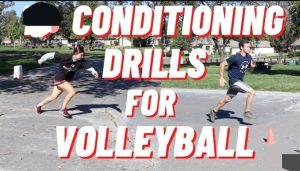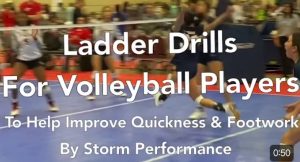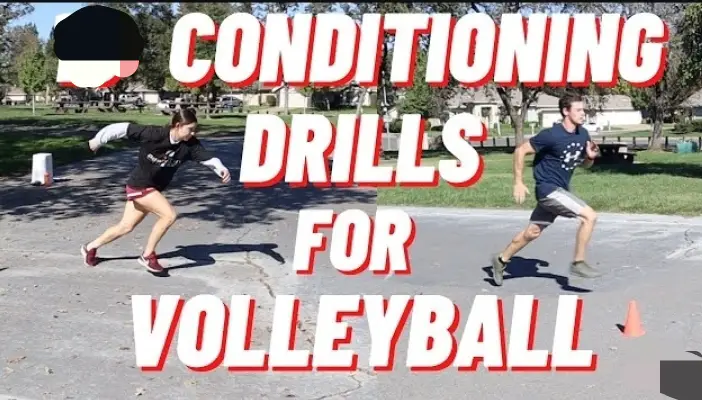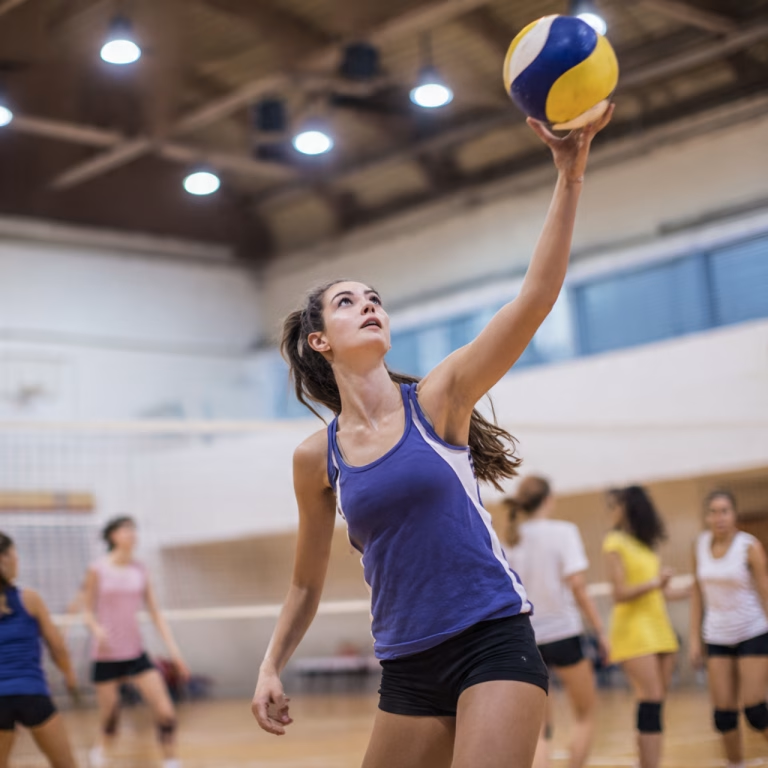A game that brings pleasure and develops dexterity and coordination is volleyball. Volleyball conditioning drills allow you to master basic techniques in a short time, teach your body to cope with fast movements across the field, and improve your reaction. With volleyball conditioning drills, a player improves his skills in a short time and becomes an effective player on a volleyball team.

In the fast-paced world of volleyball, being able to sustain high-intensity movements throughout a match can make all the difference. Imagine chasing down a seemingly unreachable ball, only to find yourself gasping for air and unable to execute the next play effectively. Conditioning drills help you overcome such limitations by building your stamina and preparing your body for the rigors of the game.
The Importance of Endurance and Agility in Volleyball
Endurance and agility are two essential components that contribute to a well-rounded volleyball player. Endurance allows you to maintain a high level of performance throughout an entire match, preventing fatigue from hindering your abilities. Agility, on the other hand, enables you to quickly change directions, react to unexpected situations, and execute precise movements on the court.
Picture this: You’ve just made a powerful spike, and the opponent team returns the ball with a crafty shot. Without endurance, you might find yourself struggling to get back into position, leaving your team vulnerable. Agility comes into play as you swiftly adjust your body, anticipate the ball’s trajectory, and seamlessly transition into your defensive stance.
By incorporating volleyball conditioning drills into your training routine, you’ll not only improve your physical capabilities but also develop the mental toughness required to excel in this demanding sport.
See Also:
- Grass Volleyball Rules 2024: A Comprehensive Guide for Players
- Beach Volleyball Rules 2024: Key Differences From Indoor Game
- Middle School Volleyball Rules (2024 Updated)
Volleyball Conditioning Drills
Let’s look at six effective volleyball conditioning drills designed to boost your stamina and enhance your volleyball skills.
1. Ladder Drills: For Agility and Footwork
Exercise: Ladder drills are a staple in volleyball conditioning, targeting agility, footwork, and coordination.

How to: These drills involve strategically placing a ladder or series of cones on the ground and performing various footwork patterns while navigating through them.
2. Lateral Shuffle Drill: Volleyball Conditioning Drills
Exercise: The lateral shuffle drill is a fitness exercise to improve agility, footwork, and lateral movement skills.
How to:
- Set up a ladder or a line of cones on the ground.
- Start at one end of the ladder, facing sideways.
- Shuffle laterally through the ladder, keeping your feet outside the rungs or cones.
- Maintain a low, athletic stance and focus on quick, controlled movements.
- Repeat the drill in both directions.
Benefits: This drill enhances lateral movement, which is crucial for defending and transitioning on the court.
3. Icky Shuffle Drill
How to:
- Set up a ladder or a line of cones on the ground.
- Start at one end of the ladder, facing forward.
- Step into the first rung or space between cones with your lead foot.
- Bring your trailing foot into the same rung or space, maintaining a low, athletic stance.
- Continue this pattern, alternating your lead foot as you move through the ladder.
Benefits: The Icky Shuffle Drill improves footwork, coordination, and agility, preparing you for quick movements in any direction.
4. Plyometric Exercises
Exercise: Plyometric exercises are designed to develop explosive power, which is essential for jumping, spiking, and blocking in volleyball.
How to: These drills involve rapid stretching and contracting of muscles, training your body to generate maximum force in a short amount of time.
5. Box Jumps
Exercise: Box jump
How to: Stand facing a sturdy box or platform, with your feet shoulder-width apart.
- Bend your knees and swing your arms back, preparing for the jump.
- Explosively jump up onto the box, landing with both feet simultaneously.
- Step back down and repeat for the desired number of repetitions.
Benefits: Box jumps improve lower body power, which translates to higher vertical jumps and more powerful spikes.
6. Lateral Bound
- Stand with your feet shoulder-width apart, knees slightly bent.
- Shift your weight to one leg and explosively push off the ground, propelling yourself laterally.
- Land on the opposite leg, absorbing the impact by bending your knee.
- Immediately push off the ground again, bounding back to the starting position.
- Repeat the movement, alternating legs.
Benefits: Lateral bounds enhance lateral explosiveness, crucial for quick side-to-side movements and defensive plays.
7. Conditioning Circuits Exercise: Volleyball Conditioning Drills
Conditioning circuits combine various exercises into a high-intensity workout, challenging your cardiovascular endurance and muscular strength simultaneously. These circuits are designed to mimic the demands of a volleyball match, preparing your body for sustained performance.
Volleyball-Specific Circuit
- Set up stations around the court or gym, each with a different exercise (e.g., burpees, mountain climbers, squat jumps, push-ups).
- Perform each exercise for a specified time or number of repetitions.
- Transition quickly between stations, with minimal rest.
- Complete multiple rounds of the circuit, gradually increasing the intensity or duration.
Benefits: This circuit incorporates exercises that target the specific muscle groups used in volleyball, improving overall conditioning and sport-specific endurance.
Tabata-Style Circuit
- Choose four to six high-intensity exercises (e.g., jumping jacks, high knees, squat thrusts, plank jacks).
- Perform each exercise for 20 seconds, followed by 10 seconds of rest.
- Repeat this cycle for a total of 8 rounds (4 minutes) per exercise.
- Transition quickly between exercises, with minimal rest between rounds.
Tabata-style circuits are intense and time-efficient, pushing your cardiovascular system to its limits and improving overall endurance.
FAQs
What is the importance of conditioning drills in volleyball?
Volleyball conditioning drills are essential for volleyball players as they help improve endurance, agility, and overall physical preparedness for the demands of the sport. By incorporating these drills into your training routine, you’ll be better equipped to sustain high-intensity movements throughout a match, react quickly to unexpected situations, and execute precise movements on the court.
How often should I incorporate volleyball conditioning drills into my training?
The frequency of volleyball conditioning drills depends on your individual goals, fitness level, and training schedule. As a general guideline, aim to include conditioning drills at least twice a week, allowing for adequate rest and recovery between sessions. It’s also important to gradually increase the intensity and duration of your conditioning workouts to avoid overtraining and injury.
Can volleyball conditioning drills help prevent injuries in volleyball?
Yes, volleyball conditioning drills can play a crucial role in injury prevention for volleyball players. By improving overall strength, endurance, and agility, these drills help prepare your body for the physical demands of the sport. Additionally, many conditioning exercises focus on developing core stability, balance, and proper movement patterns, which can reduce the risk of common volleyball-related injuries.
How do I incorporate conditioning drills into my volleyball practice?
Incorporating conditioning drills into your volleyball practice can be done in various ways. You can dedicate specific sessions solely to conditioning, or you can integrate drills into your warm-up routine or as part of your skill-based practice. It’s important to strike a balance between conditioning and skill development to ensure well-rounded improvement.
Are volleyball conditioning drills suitable for all skill levels?
Conditioning drills can be beneficial for volleyball players of all skill levels, from beginners to advanced players. However, it’s essential to adjust the intensity and complexity of the drills based on individual fitness levels and experience. Beginners may start with simpler drills and gradually progress to more challenging exercises as their fitness improves.
Final Take (Conclusion)
Incorporating volleyball conditioning drills into your training regimen is a game-changer for boosting endurance and agility. By mastering these drills, you’ll not only enhance your physical capabilities but also develop the mental toughness required to excel in this demanding sport.
Imagine the thrill of chasing down a seemingly unreachable ball, your endurance allowing you to sustain your efforts until the very last point. Envision yourself seamlessly transitioning from offense to defense, your agility enabling you to react with lightning-fast precision.
Remember, consistency is key. Commit to a regular conditioning routine, and you’ll soon witness the transformative effects on your performance. Embrace the challenge, push your limits, and unlock your true potential as a volleyball player.
The path to becoming a well-rounded, unstoppable player on the volleyball court starts here. Embrace the grind, and let your endurance and agility shine!
See Also:
- Volleyball Defense Drills 2024: New Improved
- Volleyball Block Drills 2024 – New Improved
- Volleyball Hitting Drills – 2024 (New Improved)
- New Improved Volleyball Tryout Drills – 2024




